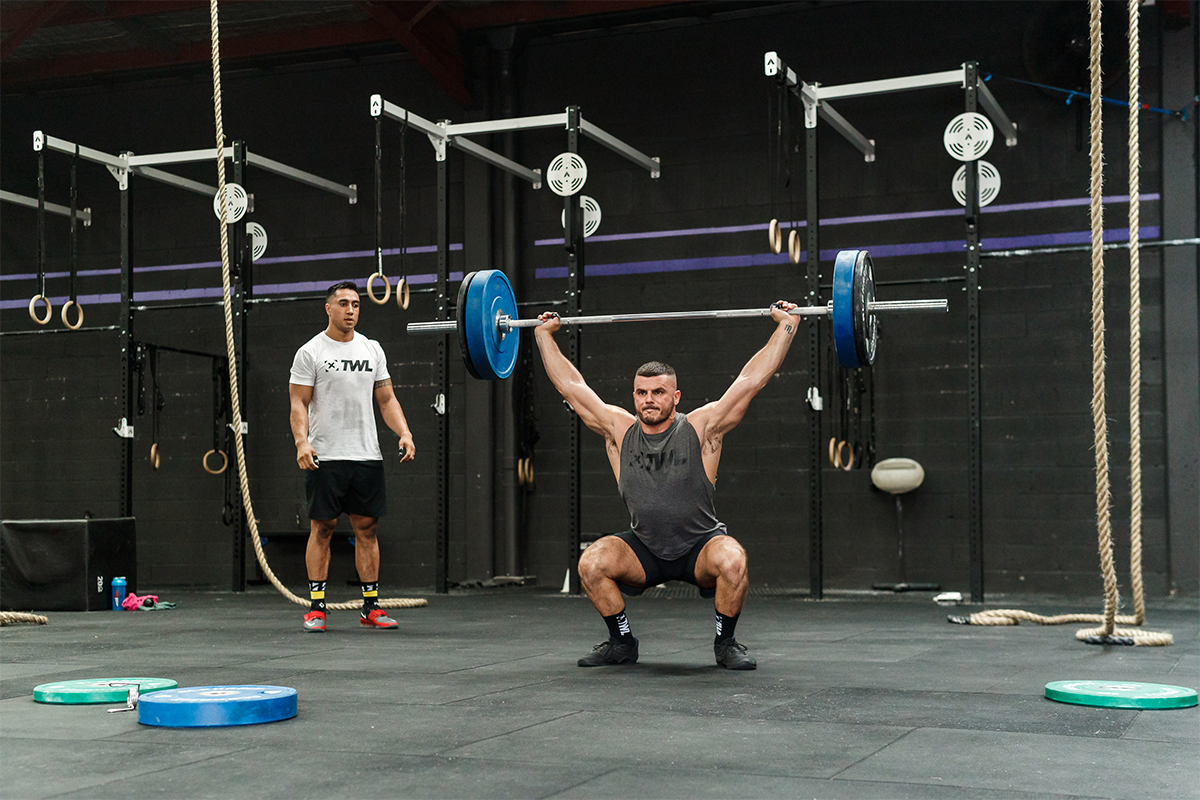You might be struggling to decide how to spend your time at the gym. Will 30 minutes on the treadmill bring you the best results? What about a five-minute AMRAP that leaves you on the floor panting? Or maybe a series of mini HIIT workouts are your best bet. We’ll always remind you that what you do for physical activity should largely be based on (1) your goals and (2) what you enjoy doing. That being said, strength training packs a serious punch. Let’s talk about some of the health benefits of strength training and why you might want to make a little more time for it.
7 Health Benefits of Strength Training that You Need to Know About
To be clear, when we talk about “strength training,” we mean using anything — even the weight of your own body — to provide resistance. (That’s why some people call it “resistance training.”) This could mean using dumbbells, kettlebells, a barbell, cables (or something like Crossover Symmetry), weight machines, or any other weighted apparatus.
Shop Now
Now, let’s get to the health benefits of strength training.
1. Build Muscle and Increase Strength
This one is probably a given but worth talking about anyway.
When you challenge your muscles with resistance training, you create microtears in the muscle tissue. And when you rest and recover, these tears heal. This is ultimately what makes your muscles grow.
Over time, you can expect greater muscle definition and improved strength. Better yet, while you might deadlift more or knock out more pull-ups, you can expect this benefit of strength training to translate outside the gym as well. Improved muscle strength also keeps you healthy for tasks like bringing in the groceries and picking up your child without pulling a muscle.
And speaking of pulling a muscle…
2. Reduce Your Risk of Injury
While it might not seem this way, strength training is actually beneficial for your mobility. And with an improved range of motion comes a decreased risk of injury. More specifically, it can help with chronic lower back pain.
And we’re not just talking about avoiding injury in the gym. We all know someone who threw their back out tying their shoe (or something like that). Much of this comes down to a lack of mobility somewhere, and when you moved a certain way, your body just didn’t like it.
Strength training can be a game-changer in avoiding injuries like this.
3. Eliminate (and Keep Off) Body Fat
You might already know that muscle burns more calories than fat. Thus, the more muscle you have on your body, the higher your resting metabolic rate is. In other words, you burn more calories throughout the day — even at rest — than you would if you had less muscle.
So, strength training helps build muscle, which helps reduce and keep off body fat. One study even found that in particular, strength training is better for preventing an increase in abdominal fat, compared to cardio. Win! (By the way, if you want to learn more about this, check out our blog on why weightlifting is better than strict cardio.)
If one of your goals is to improve your physique, making more time for strength training (even if it means doing a little less of your traditional cardio training) might be the right move for you.

4. Strength Training Can Improve Bone Health
Similar to what resistance training does to your muscles, it challenges your bones, too. As a result, your body’s cells get to work healing and strengthening those bones. Science says that this will be especially helpful for aging individuals, postmenopausal women, and middle-aged men. In fact, strength training might be one of the best things you can to do improve your muscle and bone mass.
Especially considering that we lose bone mass/density as we age, this is of importance. Our bones lose calcium and other important minerals. The vertebrae that make up the spine lose mineral content. As a result, the bones grow thinner. Even modest resistance training can help to offset this.
5. Enjoy Better Mental Health
Research says that strength training is good for your body and your mind. It can improve anxiety, reduce depressive symptoms, and it’s even been shown to improve the mood among adults living with HIV.
While it might be hard to get your body moving at first, rest assured that if you do, you’ll enjoy the mental health benefits of strength training. It’s okay to keep it simple — a quick squatting complex, some upper-body work with dumbbells, your favorite kettlebell workout, or even bodyweight push-ups and planks.
6. Your Brain Will Work Better
Research involving older adults has suggested that strength training can improve cognitive function — which can include memory and processing speed. This is important for all of us — not just older individuals. Do you find it hard to stay focused and concentrate at work? Do you easily forget things? Young or old, resistance training helps ensure your brain is doing its job more efficiently.
It might seem counterintuitive with how sluggish you’re feeling, but making time for strength training will help you feel more alert, not less.
7. Resistance Training Improves Heart Health and Cholesterol
According to science, regular strength training can lead to better HDL (the “good” cholesterol). Blood pressure and triglyceride levels might also improve. While cardio is thought to be the type of exercise that improves cardiovascular health, strength training is just as effective — and possibly more so.
Don’t let the idea of strength training overwhelm you! Remember, even bodyweight exercises make a difference. Stay consistent with your programming and you’ll get to enjoy the health benefits of strength training.
Looking to stock up for your next strength training workout? Shop The WOD Life’s collection of equipment today.

















